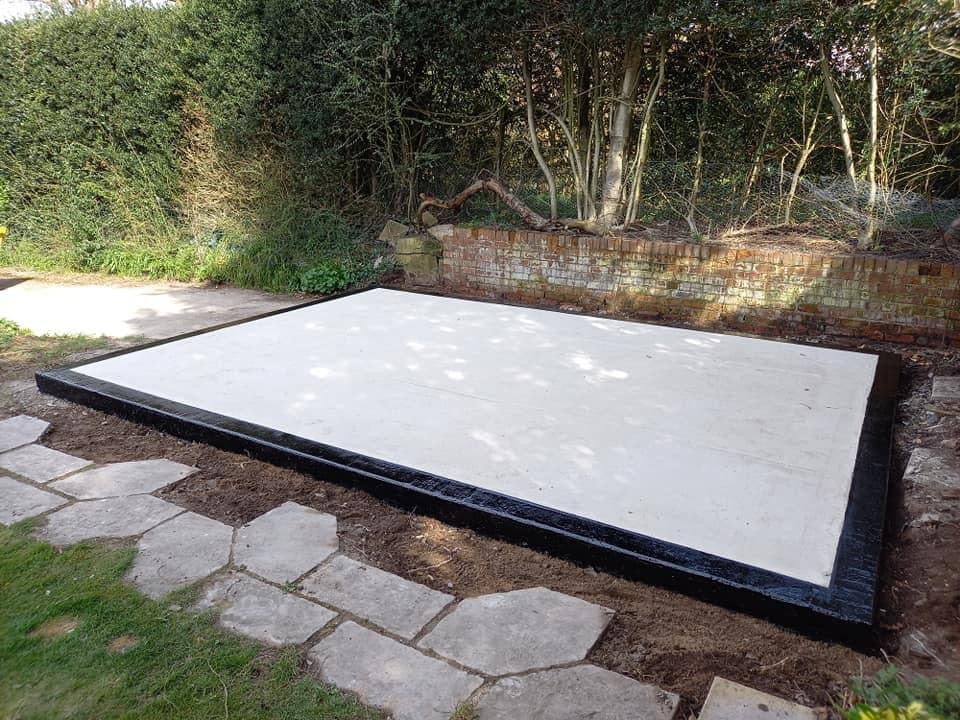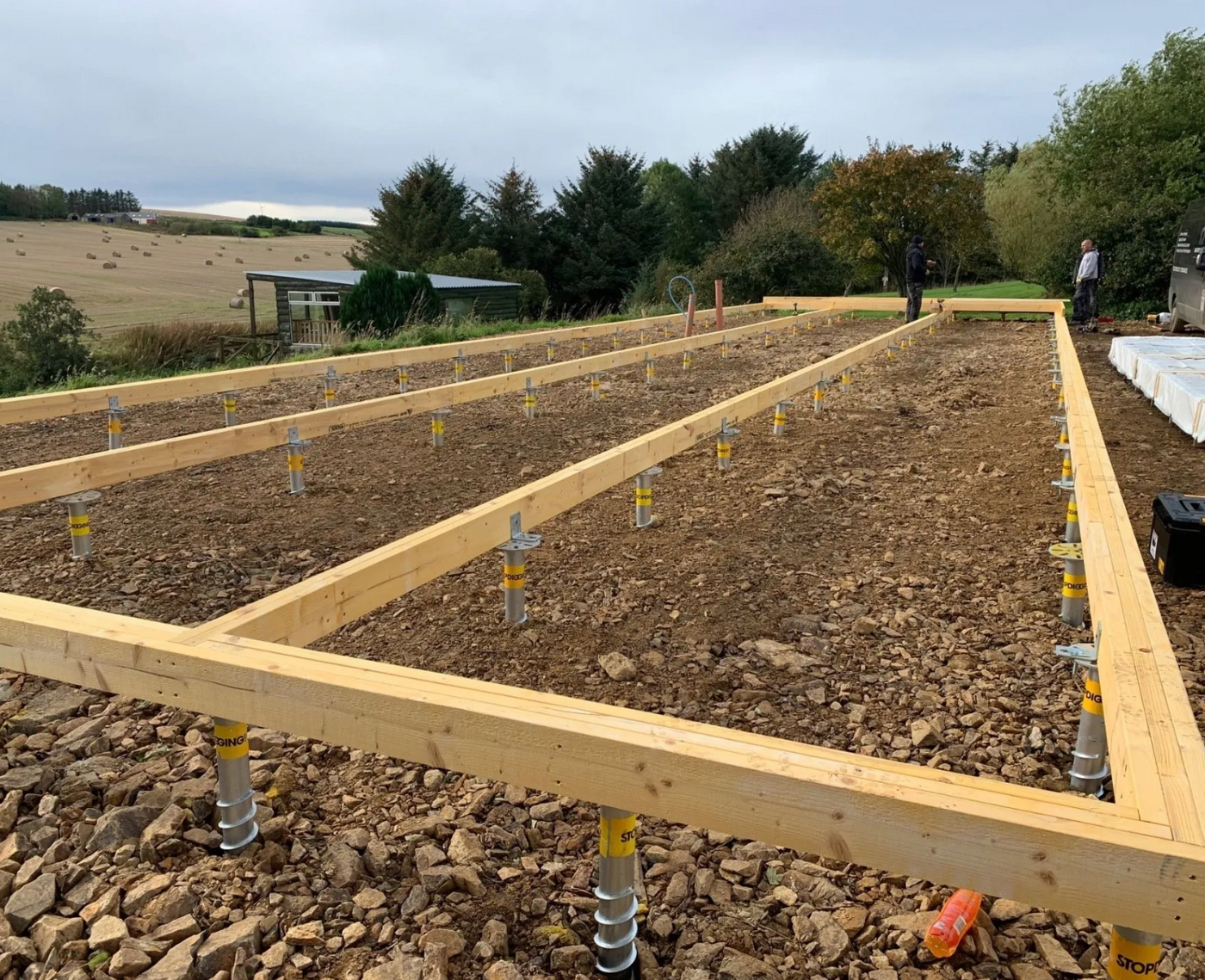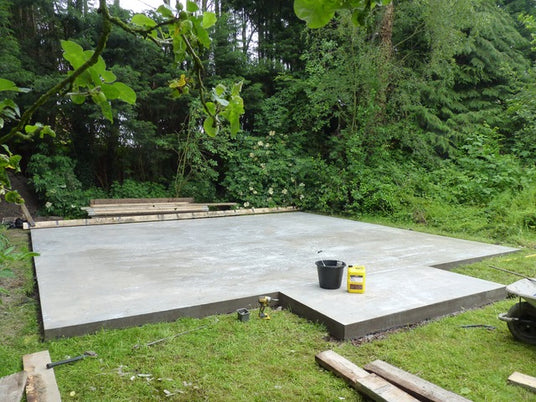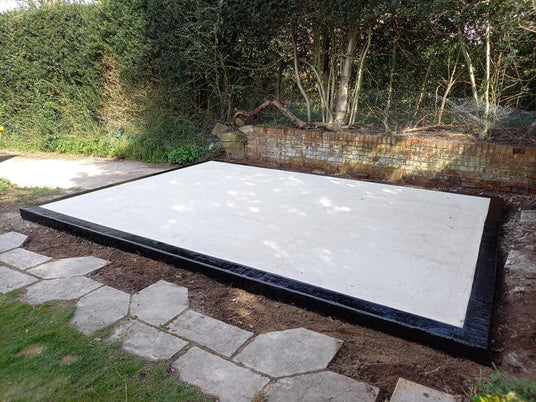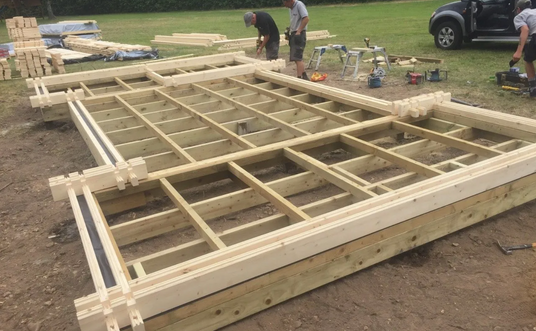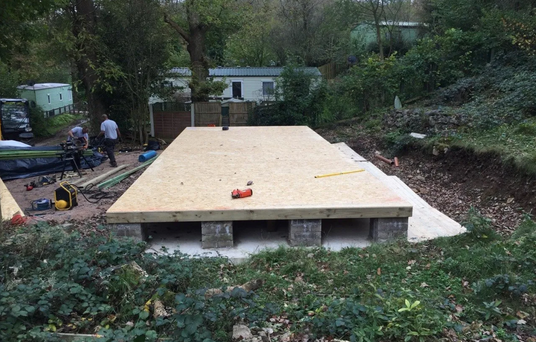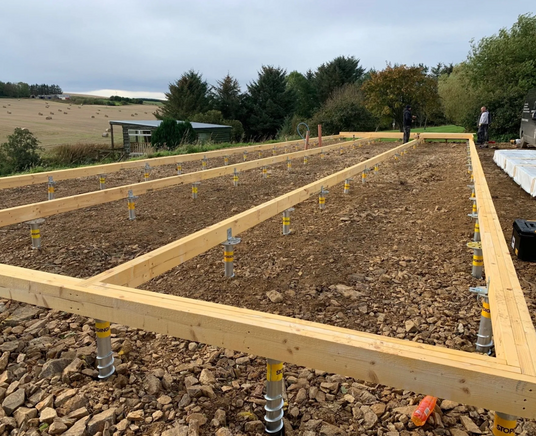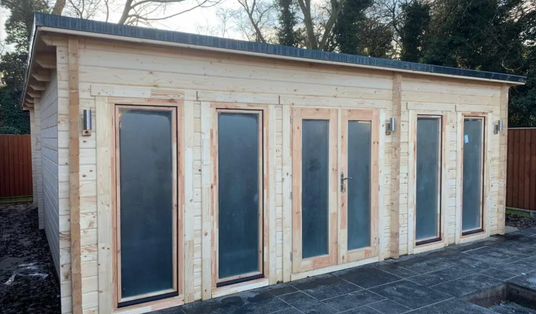Which log cabin base is right for you? See our log cabin base guide below.
Which log cabin base should I choose?
If you're looking to build a log cabin, you'll no doubt already have identified the perfect location for your new timber building. While you may have found a design and a size that you love, it's important to remember that all successful garden buildings will have one key thing in common: a stable, flat and solid base. Timber cabins can be heavy, and it's vital that the base can both take the weight, and allow all windows and doors to be opened and closed properly.
Fail to get the base right, and you could be faced with all sorts of problems: logs that sit badly, a roof that could crack, warp or split, or gaps forming between the logs.
There are three main methods that are used to create a sturdy, solid base for timber garden buildings: concrete, paving slabs, and decking.

